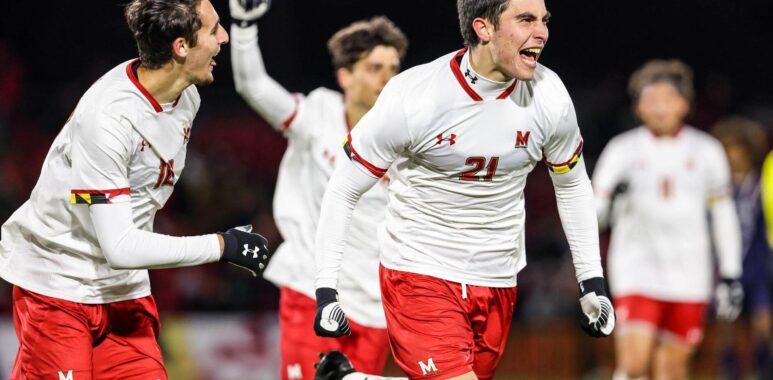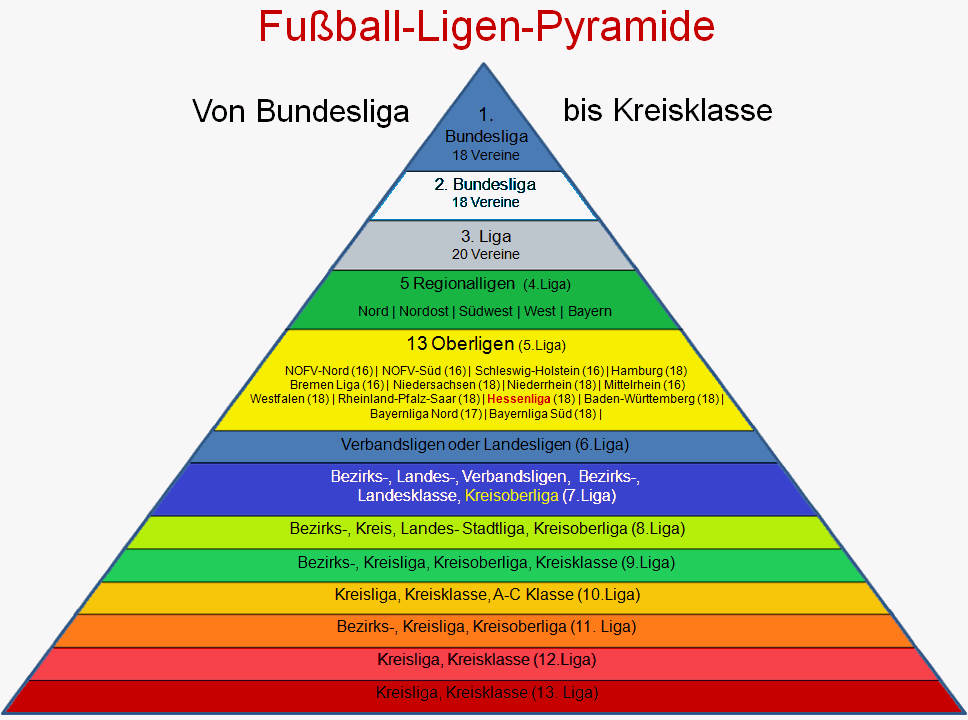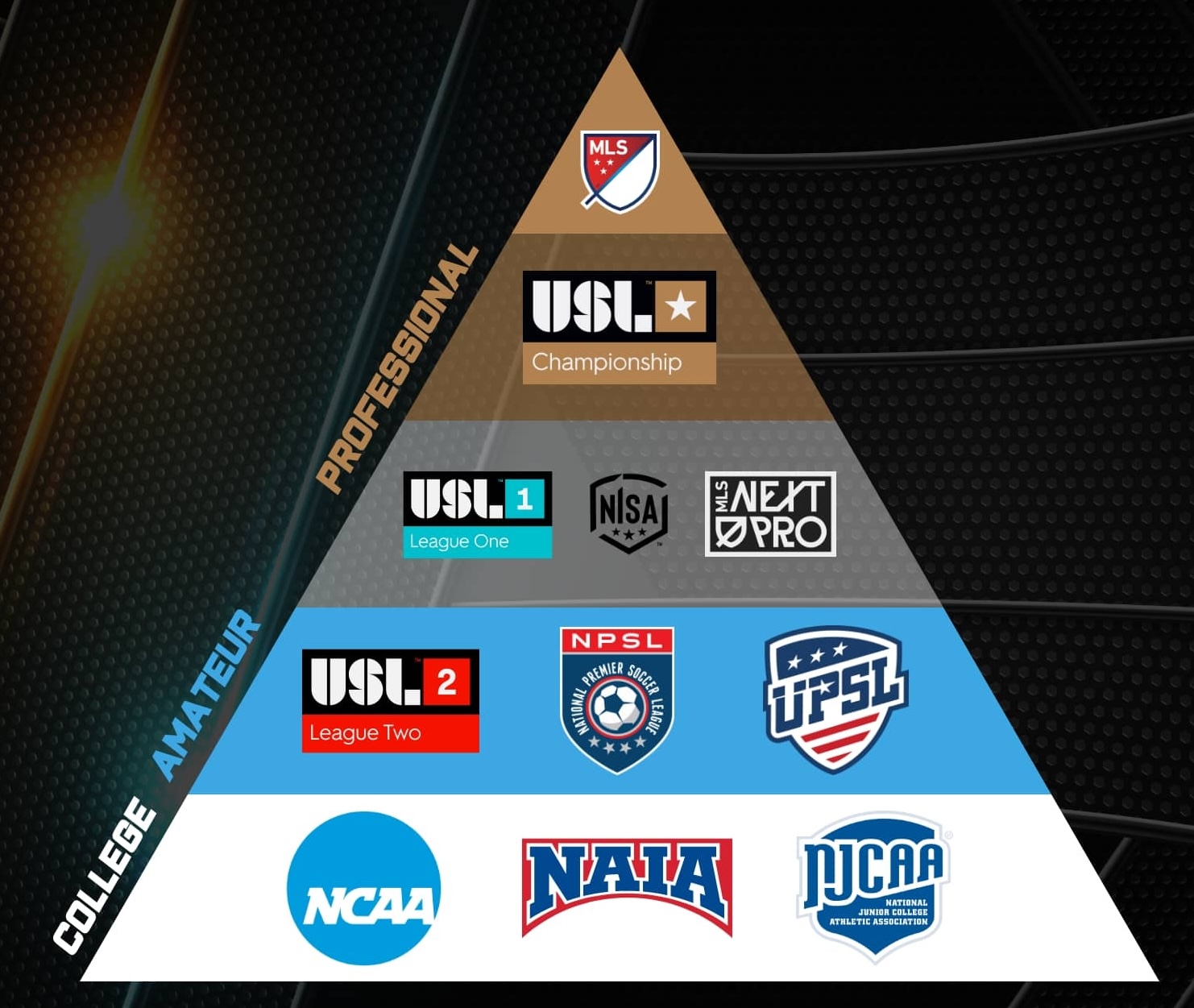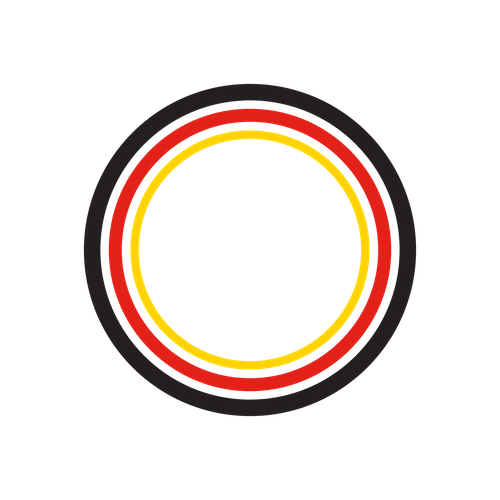
What level can a College Soccer Player play in Germany?
Many players are looking to become a professional player after their collegiate soccer career. Today we are explaining how the level of college soccer and other leagues in the USA translates to the European and German league systems.
Before we dive into examples, we need to explain the differences in the league systems for both countries.
If you already know the ins and outs of the German league system you can jump straight to the examples.
Table of Contents
Soccer Pyramid In Germany
The German football league system is like a massive, organized ladder of soccer leagues. Think of it as a complex hierarchy with 2,235 leagues spread across 13 different levels, involving more than 31,000 teams.
It’s all about competition: Teams that dominate their league get promoted to a higher level, while the less successful ones get demoted. It’s designed so that theoretically, any grassroots team could climb their way to the very top and claim the title of German football champions.
In total, the German Soccer pyramid has 13 tiers that are all interconnected.

Professional Leagues (Bundesliga System)
The top-tier is the Bundesliga, one of the premier European leagues, known for its high-quality play and strong fan culture.
The second division is the 2. Bundesliga, which plays for promotion and relegation to and from the 1. Bundesliga and 3. Liga.
The 3. Liga follows, providing professional football and a gateway for promotion to higher leagues but also the risk of dropping to lower divisions.
Both the 2. Bundesliga and 3. Liga are considered the strongest 2nd and 3rd tier leagues worldwide (along with the English 2nd and 3rd tier) due to their competitiveness and infrastructure and number of fans.
Regional Leagues (Semi-Professional/Pro)
Below the 3. Liga are the Regionalliga divisions, which are split into five regional sections. Approximately half of the teams are considered to be fully professional (meaning players do not have to take a job or education) whereas the other half is considered semi-pro with most players either taking remote education courses or having a job on the side.
Below the 4th division, the pyramid fans out into many Oberliga divisions, with each catering to specific regions. Most of the teams are semi-pro with some teams being full pro (especially the ones who are competing to get promoted to the 4th tier).
Amateur Leagues
The amateur levels contain numerous tiers, including the Landesliga, Bezirksliga, Kreisliga, and Kreisklasse, among others, which involve local amateur clubs. Even in these leagues, some teams can be considered semi-pro, but the vast majority of clubs operate on an amateur level with players having a “normal” job or academic pathway like university. Some clubs are also able to cover expenses such as housing, and clubs usually only have a small membership fee per year (~150 EUR per year).
Soccer Pyramid in USA

Professional Leagues (MLS and Others)
The Major League Soccer (MLS) is the top professional league, with no system of promotion or relegation.
Below MLS are the USL Championship and USL League One, which are considered second and third-tier leagues, respectively.
There’s also the National Independent Soccer Association (NISA) operating as a professional league.
Semi-Professional and Amateur Leagues
The USL League Two and the National Premier Soccer League (NPSL) provide a mix of semi-professional and amateur play.
Numerous amateur leagues exist across the country, serving as community foundations for soccer.
College Soccer
Unique to the U.S. is the integration of soccer into the college sports system.
The NCAA Division I, II, and III levels as well as NAIA offer varying degrees of competitive college soccer, often seen as a pathway to professional play, especially via the MLS SuperDraft.
Comparing the Soccer Pyramid in Germany and USA
Structure
Germany’s system is a traditional European model focused on club promotion and relegation based on performance.
The U.S. lacks a formal promotion-relegation system and includes the college system as a major player development pathway.
Development
Germany emphasizes club-based development from a young age, with a clear pathway to professional ranks.
The U.S. utilizes a mix of club systems, high school soccer, and college soccer for development, with multiple pathways to the professional game.
Accessibility
Germany’s pyramid provides numerous levels for all skill levels, emphasizing local community involvement.
The U.S. system offers a broad range of play levels but is often criticized for its pay-to-play model in youth soccer, potentially limiting access.
Cultural Impact
Soccer is deeply ingrained in German culture, with clubs often serving as community hubs.
In the U.S., soccer competes with other major sports for attention but has been steadily growing in popularity, especially with the youth.
Summary
In conclusion, while both Germany and the U.S. have robust soccer systems, their approaches differ significantly. Germany’s model is club-centric with a focus on community and professional development, whereas the U.S. incorporates educational institutions into the fabric of player development, creating unique pathways that include academic pursuits alongside athletic growth.
What level can a college player play in Germany?
We understand that this can be a controversial topic, and comparing both league systems will never be completely accurate. Factors such as a short competitive college season lasting a maximum of 4 months during the fall, the higher number of substitutions allowed, and the age/eligibility limits are just a few reasons that make it challenging to compare the level of soccer in both systems. Moreover, it’s essential to recognize that every position has different technical and tactical standards and qualities that clubs and coaches are looking for.
However, based on the data from our 1,000+ transfers of international players to Europe and to college, we can provide a reliable prediction of what coaches and clubs are looking for.
Transfer from Germany to College Soccer
Given that players of 3rd league and above are not eligible to get recruited to play in the college soccer system since they are considered fully professional, the highest league players are recruited from by College Coaches is the Regionalliga followed by the Oberliga.
Key players in Regionalliga or Oberliga are usually top NCAA D1 or NCAA D2 players who qualify for a full ride at pretty much any school.
Besides these top prospects, players who are part of the lower leagues (6th tier and below) are still having very good chances of being recruited, with many receiving partial scholarships, typically ranked outside the top 75 college teams!
From Germany to MLS
Transfer from College to Germany
Now, if you are looking to play in Germany after your college soccer career, similar principles can be applied.
If you are a top NCAA D1 or D2 college player (with regional honors or all-American honors), then it is realistic to target Regionalliga and Oberliga in Germany.
Average college players who see at least 50% of playing time for top 75 college teams realistically will have the level to compete in Oberliga and Landesliga (5th and 6th tier) in Germany.
Players who make the roster and get playing time for a top 100 college team realistically have the level to play in Landesliga or below (6th-9th tier) in Germany.
It is important to mention that these tiers are just the entry points, but the journey continues from there. The option to get promoted or relegated will open doors for players to enter new tiers purely based on their performances and statistics generated in the league games.
How to sign a professional soccer contract in USA and Europe
Conclusion
Getting adjusted to a new country and league system can be intimidating at first. However, given the open league system in Germany, the chance of getting promoted to a higher-level team is always an option.
However, this means you will need to stand out in your team and league initially, and overcome cultural, language, and playing differences to make yourself a great fit for German teams. This process might require time and guidance, but the transparent league systems will provide you with feedback on your development progress.
The potential for moving up tiers is likely higher for international players. The reason is that the new level of coaching, along with technical and tactical improvements, can lead to significant performance enhancements and make you a more complete and better player.














